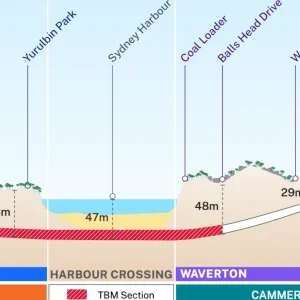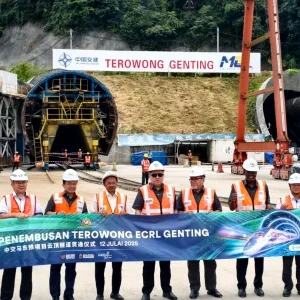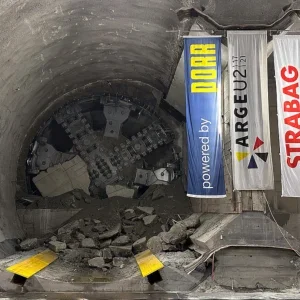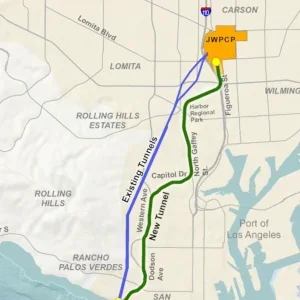Excavation of the twin tube, Cabrera high-speed rail tunnels, in Spain, have been completed ahead of schedule by the JV contractor using a 9.69m diameter Herrenknecht TBM.
The double shield completed the first, almost 6km long drive through sedimentary rock at the beginning of this year and was relaunched in May, ahead of schedule, on the second bore where it achieved a best day of 105.6m (66 rings) and best week of 435m (290 rings).
The average weekly and best month advances made by the shield (S-373) on the second drive were 284m (178 rings) and 1,688m (1,055 rings), respectively.
While the top daily rate on the second drive was much faster than the first, the best weekly and monthly performances were reasonably comparable. The construction time was a month shorter, at less than five months, on the second run. Herrenknecht said that sufficient progress was made to cut the construction period by a quarter.
On the first drive, the contractor – a JV of FCC Construccion and Construcciones Sanchez Dominguez-Sando – achieved comparable progress rates for best week and day of 430.4m (269 rings) and 83.2m (52 rings), respectively. Best month was 1,598m (1,000 rings).
The alignment through the Sierra de la Cabrera comprises limestone, dolomite geology and the TBM has cutterhead power of 4,900kW with 13 back-up gantries. The 8.75m i.d. rings are 1.6m long with seven segmental sections up to 8.8 tonnes, and the double shield enabled concurrent advance and lining work. The tunnels have been constructed with a 3% gradient.
Tunnelling on the project began in mid-2007 and with the plan earlier this year for relaunch to be underway about the end of the second quarter or shortly after, the programme anticipated final breakthrough this month (T&TI, March, p11). However, progress achieved on the second bore, drawing on the experience of the parallel first tube and the established equipment and logistical support enabled the TBM to hole through in late September.
The Cabrera running tunnels are linked by cross passages nominally every 400m, and each main bore is, in total, 7.25km long. The tunnels are being built by Spain’s rail network company, ADIF, as part of the 11.2km section of the Siete Aguas-Bunol part of the high-speed link from Valencia to Madrid.
There are two other, shorter tunnels of the Siete Aguas-Bunol section of the high-speed rail link – the 1,856m long Bunol and 424m long Siete Aguas tunnels. In total, and with being by far Cabrera the longest, the three stretches of tunnel have a combined length of 9,527m. The entire link is to be operational by the end of 2010.
Breakthrough







